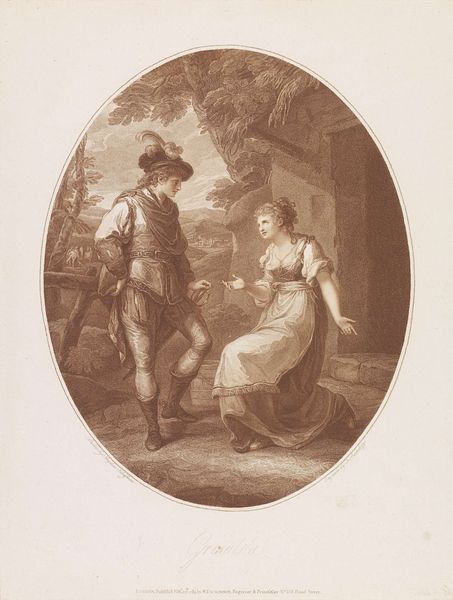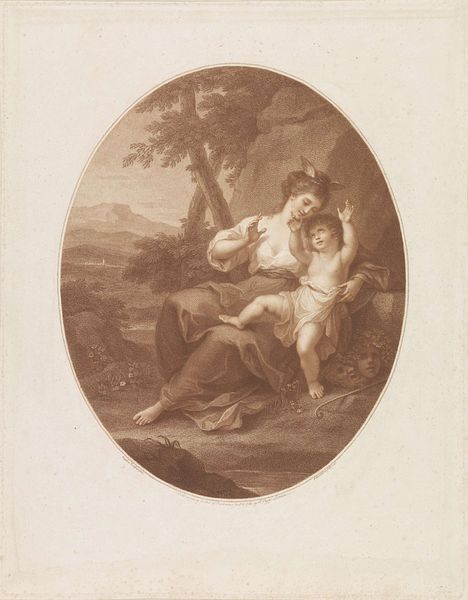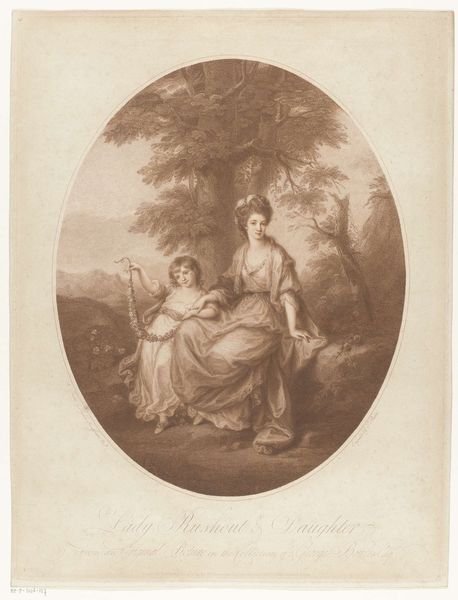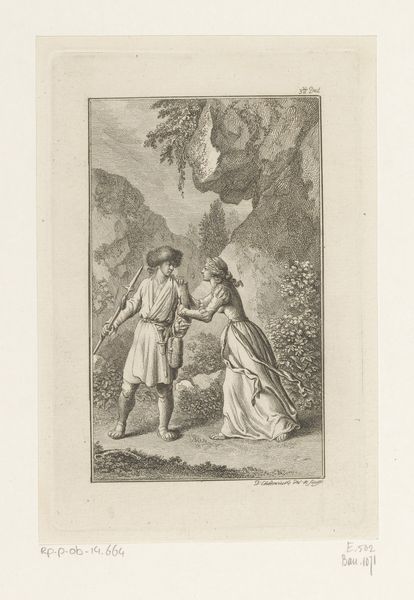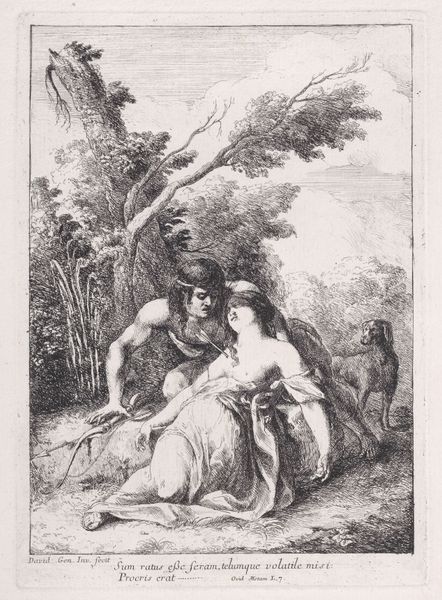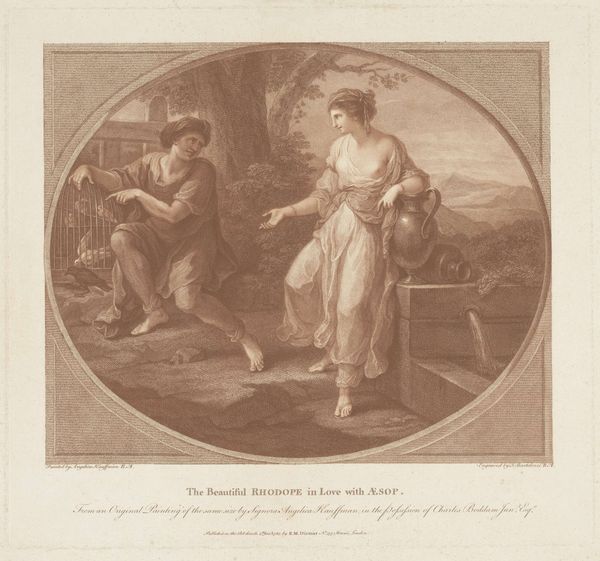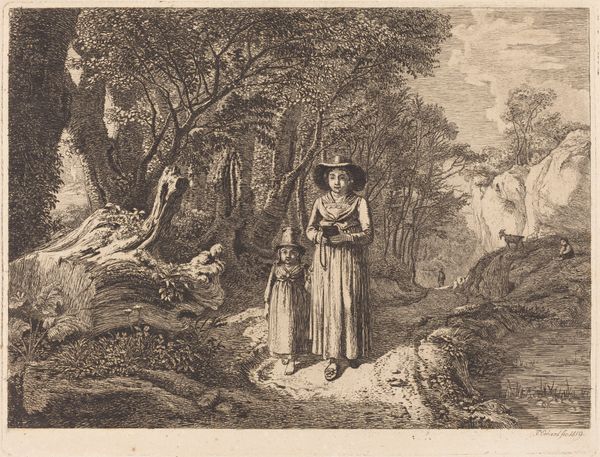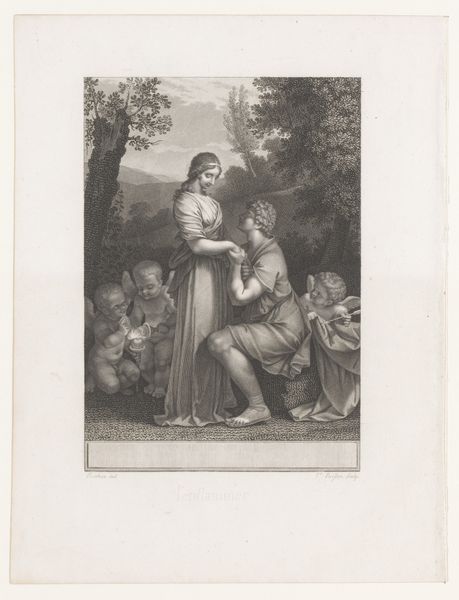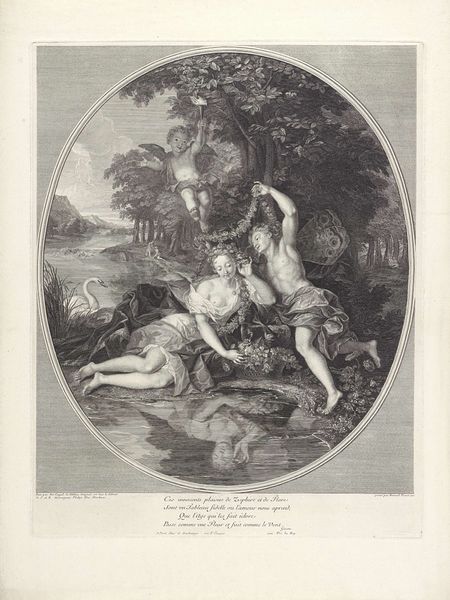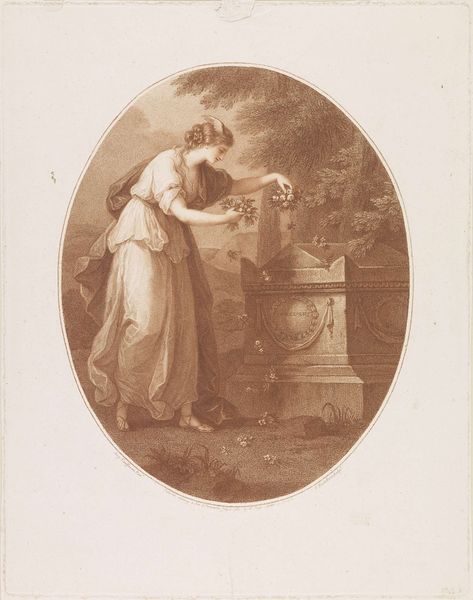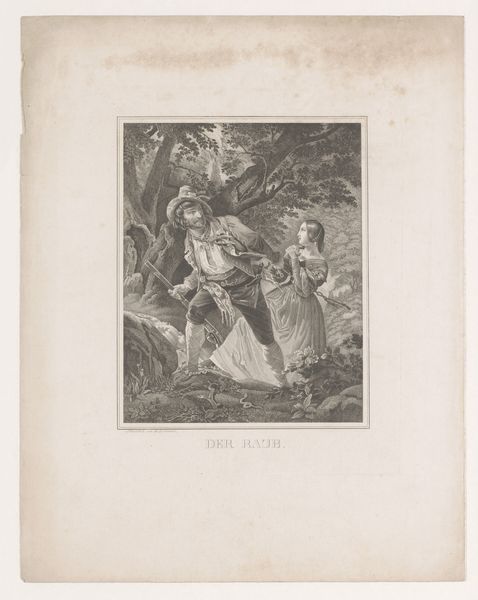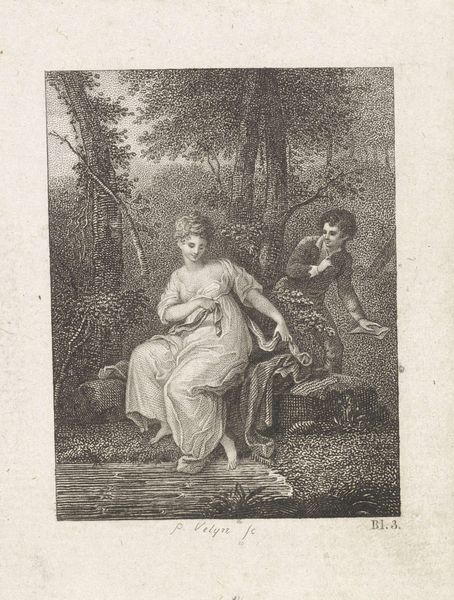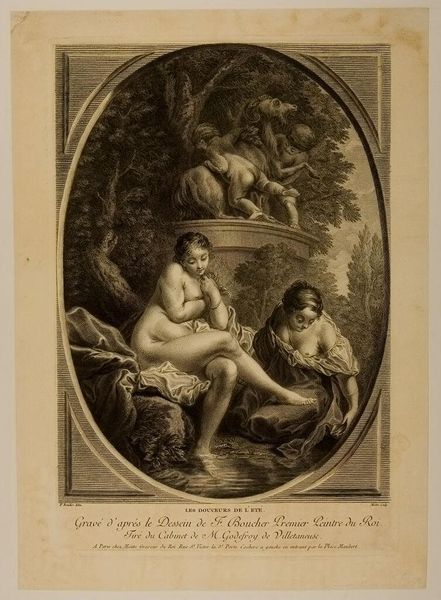
Dimensions: height 430 mm, width 329 mm
Copyright: Rijks Museum: Open Domain
Editor: This is "Herders in de Alpen", possibly from 1785, by Francesco Bartolozzi. It’s an engraving, so a print. I’m struck by its pastoral and romantic mood. What draws your eye when you look at this, professor? Curator: Immediately, I’m drawn to the labor represented, and also concealed, in this seemingly idyllic scene. Consider the copperplate engraving process: the artisan, perhaps not Bartolozzi himself, meticulously etching lines to produce this image. Editor: The lines *are* incredibly fine, especially when you look at the sheep. It almost feels like they're emerging from the background. Curator: Exactly. And those lines wouldn’t just *happen*. What were the economic structures that enabled the engraver's skill, the access to materials like the copperplate, the inks, and the printing press? Was this print intended for mass consumption, or a wealthier clientele? Think, also, of the depicted shepherds: idealized labor, obscuring the realities of agricultural work and land ownership. Editor: So, even though it looks peaceful, it’s actually making me consider the production and circulation of this *image*, and maybe how that differs from what it *depicts*. Curator: Precisely. Consider the commodification of the rural ideal itself. This wasn't necessarily an accurate depiction of the time but rather a romanticized view *sold* to an audience removed from the actual hardships of that life. Editor: I see now. The focus on materials and labour has really changed how I viewed the artwork. It made me consider the conditions surrounding it rather than simply taking it at face value! Curator: Indeed! By looking beyond the surface, we can unveil a deeper understanding of the artwork and its connection to social, economic, and political forces.
Comments
No comments
Be the first to comment and join the conversation on the ultimate creative platform.
